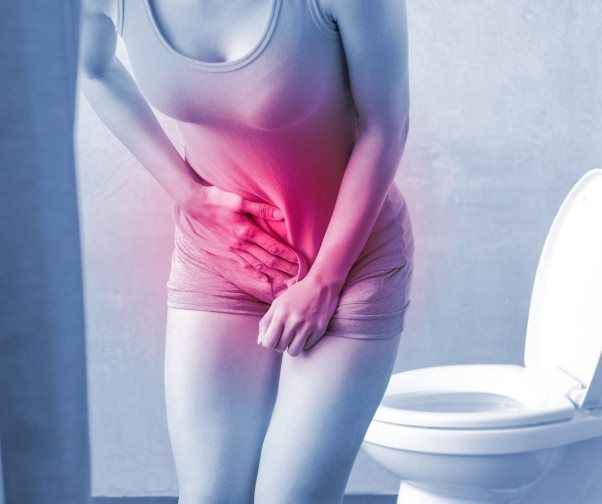30+ Thoughtful Gifts for Beloved Elders For 2026
Finding the right gift for seniors can seem challenging, but it doesn’t need to be. Whether it's a delightful surprise or something that provides comfort in everyday life, considerate gifts express...
Is Your Body at Risk? Uncover the Truth with Our Urine Output Calculator. Easily track and assess kidney function, hydration levels, and fluid balance with our Urine Output Calculator. Take control and ensure your kidneys perform optimally with just a few clicks!

Did you know that the amount of urine that you produce per hour and day is a big determinant of your health? If you’ve been wondering if you’re peeing enough, I’m here to tell you what’s normal, what’s healthy, and when you should be heading to the Doctor.
Our urine output calculator is a simple and effective tool for healthcare. It helps you figure out a patient’s fluid balance and urine output in milliliters per kilogram per hour (ml/kg/hr). This helps keep an eye on their health.
In this article, we’ll explain why knowing how much urine a person makes every hour is important. We’ll talk about things like normal urine amounts, dehydration, and how much water is in someone’s body. Plus, we’ll show you how to calculate urine output in ml/kg/hr. Understanding these can tell you a lot about a person’s health, especially about their kidneys and hydration.
Using the urine output calculator is easy and useful. It combines smart technology with health care, giving clear and useful information. This helps doctors and nurses give the best care to their patients. Next, we’ll guide you on how to use this calculator properly.
Using a urine output calculator is a straightforward process. Here’s a step-by-step guide with practical tips to ensure you get accurate results:
Before you start, make sure you have the following details about your patient:
Enter the collected information into the respective fields of the urine output calculator. Be precise with the numbers for accurate calculations.
Once you’ve entered all the data, the calculator will compute the urine output rate. This is often expressed in
milliliters per kilogram per hour (ml/kg/hr), providing a clear picture of the patient’s urine output about body weight.
Keep a record of the calculations and results. These records can be vital for ongoing patient care and future consultations. If there are concerns about the results, report them to the attending healthcare provider promptly.
By following these steps and tips, you can effectively use the urine output calculator to gain important insights into your patient’s health status. This tool, while simple, can be extremely beneficial in a clinical setting, helping to ensure optimal patient care.
Calculating urine output in milliliters per kilogram per hour (ml/kg/hr) is an essential process in monitoring a patient’s kidney function and hydration status. Here’s a detailed explanation of the formula used and some practical examples for clarity.
The formula to calculate urine output in ml/kg/hr is:
Urine Output (ml/kg/hr) = (Totle Urine Output in ml) / (Weight in kg X Time in Hours)
Example 1:
Using the formula:
Urine Output = 1400 / (70 x 24) = 1400 / 1680 = 0.83 ml/kg/hr
This result indicates the urine output rate for this particular patient.
Example 2:
Urine Output = 1800 / (60 X 24) = 1800 / 1440 = 1.25 ml/kg/hr
This higher value might suggest better kidney function or higher fluid intake.
Fluid balance is a key indicator of a person’s health, particularly about their hydration and kidney function. Understanding and managing fluid balance is crucial in various medical scenarios, from routine health maintenance to critical care.
Fluid balance refers to the amount of fluid consumed (input) versus the amount of fluid lost (output) in the body. A healthy fluid balance means that the amount of fluid taken in is roughly equal to the amount lost through urine, sweat, breathing, and other bodily functions. Maintaining this balance is vital for the body’s overall functioning, including nutrient transport, waste removal, and temperature regulation.
The calculation of urine output in ml/kg/hr is instrumental in assessing fluid balance. This measurement allows healthcare professionals to understand how much fluid the body is excreting compared to intake, which can be a sign of how well the body is maintaining its fluid balance.
Having a healthy amount of urine output is a direct result of how healthy your kidneys are. Kidney health is essential because it helps to filter out all the things we want out of our system. This includes filtering out drugs, toxins, metabolic waste, and more (1). It’s one of our body’s greatest defense mechanisms.
Urine output in very simple terms is how much urine is produced per day (2). Based on a normal fluid intake of 2,000 mL per day, a normal adult male should be peeing out 2,000 mL per day (3). Urine is produced by your kidneys, which is the body’s ultimate filtration system.
So if you’re ready to find out if your urine output is normal, I’m here to help! And also helps you figure out what to do if you’re falling below that baseline.
As a bonus, we also have a fantastic and easy-to-use Urine Output Calculator on our website that you can use now! Simply follow this link to find out how much urine you should be producing per day! Urine Output Tool Calculator (Insert Link Here).

Normal urine output will vary for everyone based on their age, health conditions, how much they’re drinking, and much more.
One of the number one factors that affects how much urine is produced is based on kidney health. If your kidneys have acute or chronic damage, this will have a direct impact on how effective they are at producing urine.
Diabetes that has not been well-controlled either Type 1 or Type 2, can have long-term impacts on the kidneys. When the kidney function decreases in these cases, the amount of urine output will decrease.
Chronic Kidney Disease is a progressive disease that leads to the decreased ability of the kidneys to function normally. It decreases the rate at which they can filter out toxins and produce urine, ultimately leading to decreased urine output.
Normal urine output is determined by age, gender, and health conditions. Overall though, individuals should pee out what they take in through fluids throughout the day. But here are the specifics of how much based on age, gender, and health conditions.
|
Approximate Fluid Intake |
Total Urine Output |
Urine Output per Hour |
When to See a Doctor |
|
|
Adult Male and Female |
2000 mL per day |
2000 mL per day |
0.5-1.5 mL per kilogram per hour, every 4-6 hours |
Urinating <500 mL daily |
|
Children |
Varies based on age, between 820-1170 mL per day |
Varies based on the amount of drinking |
0.5-1.5 mL per kilogram per hour, or every 2-2.5 hours |
Urinating <0.5 mL/kg/hour |
|
Seniors |
Varies based on activity level, ~ 1500-2000 mL per day |
1500-2000 mL per day |
0.5-1.5 mL per kilogram per hour |
Urinating <500 mL daily |
|
Pregnant and Breastfeeding Women |
Varies between 1900-2840 mL per day |
1900-2840 mL per day |
0.5-1.5 mL per kilogram per hour, or 7-10 times per day |
If you do not feel you empty your bladder when urinating |
An adult male or female who is drinking approximately 2,000 mL per day should be urinating 2,000 mL per day. A normal urine output per hour is approximately 0.5-1.5 mL per kilogram of body weight per hour (4). Or at the very least urinating every 4-6 hours.
One study of normal, healthy, adult males found that they urinated approximately 83 mL/hour when they were awake and 48 mL/hour at night when they woke up (5). This works out to be approximately 220 mL 6 times per day.
Children will not be drinking as much as adults, which results in their urine output being lower. Normal children’s urine output will be approximately 1.5 mL per kilogram body weight per day (6). Though studies have found that 48% of children fell below this recommendation due to not having enough fluids during the day.
Women during pregnancy will have increased urine output mostly due to the increased fluid requirements. It typically peaks in the first and second trimester and decreases in the third trimester (7). Most pregnant women will go to the bathroom between 7-10 times per day.
The large increase during pregnancy is due to numerous factors such as the baby putting pressure on the bladder, increased blood during pregnancy, kidneys trying to filter out more waste, and hormonal changes (8).
The normal urine output for a senior is similar to that of a normal adult. It will change based on factors such as their medical conditions, overall health, physical activity, amount of fluids taken in, weather, among other things. In general though they should be urinating 0.5-1.5 mL per kilogram body weight per hour (9).
Seniors typically take in less fluids during the day so their urine output will likely be closer to 1500 mL per day.
The normal urine output will change for everyone, as long as you are urinating the approximate amount of fluids that you’re taking in per day, that is a good sign. There is a difference between frequency and volume, the overall volume per day of urine produced is what is most important for normal urine production.
If you are peeing out a total volume around 2,000 mL as an adult and that is what you are drinking, then the frequency is not quite as worrisome. There may be some times during the day where you pee quite a bit, such as after you drink a lot at a meal, or work out. And there may be other times such as in the evening when you are not drinking as much where you don’t pee for hours.
Pay attention more so to the amount you are peeing as opposed to how frequently.
If you are not peeing the normal amounts mentioned above, then you may be suffering from Polyuria, Oliguria, or more seriously Anuria. All of these can be a result of a serious health condition, and you should be seeking medical attention.

Polyuria is a condition characterized by excessive urination, 3 liters (L) or more in a 24-hour period (10). Urinating excessively is a very dangerous condition because it can throw off sodium and blood pressure. When blood pressure and sodium levels are not in a normal range it can lead to serious heart issues such as dizziness or a heart attack.
There are certain health conditions that can lead to polyuria including; Diabetes Mellitus, Chronic Kidney Disease, Diabetes Insipidus, or Primary Polydipsia (11). There are also factors such as having too many diuretic medications and drinking too much fluids that can lead to polyuria.
It’s important to see a healthcare provider immediately if you are urinating excessively.
On the opposite end is not having enough urine output, conditions called Oliguria and Anuria. Oliguria has decreased urine output and Anuria has no urine output at all.
Oliguria is classified as less than 500 mL of urine in a 24 hour period (12). This can affect anyone from infants to seniors, and is largely caused by kidney injuries. If someone suffers from an acute kidney injury it can be a serious medical emergency. The kidneys stop filtering and producing urine, causing dangerous build-up in the body.
Some common causes of Oliguria are acute kidney injury, heart and lung conditions, vascular disease of the kidney, obstruction of the kidneys or ureters, as well as certain medications (12).
In all cases of either excessive urine output or little to no urine input, it is always recommended to see a healthcare professional to be assessed. Ensuring that your kidneys are in good working condition is important if you have any concerns.
Some early warning signs to get help are pain, fever, little to no urination, pain while urinating, vomiting, and diarrhea. If you are experiencing any of these symptoms, go see your healthcare provider immediately to get assessed.
The good news is that you can encourage healthy urine output daily by making a few changes to your daily routine. Here are some top tips on how to increase your urine output and have a healthy bladder and kidneys!
The number one tip is to ensure that you are drinking enough fluids to keep urine output high. The amount of fluids that you should drink will vary based on age, activity level, and body size. In general, you should be drinking enough water that you feel the need to pee every few hours.
Adults that are moderately physically active should be drinking approximately 2 liters of fluids per day (13). If you are highly physically active and losing sweat while doing so, you may need to drink more fluids to cover the losses.
If you live in a hot and humid climate you may also need to drink more water. If you spend time outdoors in this climate you are likely losing fluids due to your environment, so be sure to increase how much you’re drinking.
Pregnant and breastfeeding women should drink more fluids to stay hydrated and increase their urine output.
Water will always be the best choice for keeping hydrated. Reducing the amount of pop or soda, drinks high in sugar, caffeinated, and alcohol, can ensure that you have normal urine output. Water is also the healthiest choice for maintaining a healthy body weight, which is important for bladder health.
You can stay hydrated through your diet as well. If you’re having soups, smoothies, high water content fruits such as watermelons and cucumbers, that can also count towards keeping you hydrated.
Some foods can dehydrate you that you should avoid. If you have a high salt diet this can cause increased urine output. Drinking alcohol can also make urinating more difficult, so cutting back will be in the best interest of your kidneys and bladder (14).
Having a healthy bladder and kidneys means that you’re going to have a higher urine output, which is a good thing! Maintaining a healthy body weight and being physically active are two ways that you can improve your overall health. These two habits help to maintain urination at regular times and can help to keep your bladder healthy.
Ensuring that when you feel the urge to pee, you go right away, helps as well. Make sure that when you go to the bathroom you feel like you are fully emptying your bladder. As long as you feel the urge to pee, keep going. This helps to keep your bladder and ureter healthy.
People who smoke are more likely to have a myriad of health issues, but it is also reported that they are also more prone to bladder issues and urinating. If you are currently smoking, talk to a healthcare professional about quitting, and your health will improve!
Normal urine output per hour will vary based on your age, gender, and physical activity level, but in general, you should be peeing out the amount of fluids that you’re drinking daily. The average adult should be drinking about 2 liters of fluids per day and should be urinating at least every 4-6 hours.
Pregnant and breastfeeding women will generally need more fluids daily and will be peeing more, which is healthy for both her and her growing baby. Children and seniors are the two groups of people who will generally be having less fluids, but they should still be urinating 4-6 times per day.
If you find that you’re having trouble urinating, and are not urinating at least every 4-6 hours despite having adequate fluids, it may be time to talk to a healthcare professional. Urinating on a regular basis is very important to keep your bladder and kidneys healthy.
If you have any concerns that you may be suffering from Oliguria or Anuria, it is time to seek immediate medical attention. Not peeing at all during the day can be a sign of a very dangerous health condition, so do not wait.
If you want to check your urine output, be sure to use our Urine Output Calculator Tool (insert link here). It is a very helpful and easy-to-use resource that allows you to get an idea of how much you’re peeing per day!
If you want to learn more about healthy urine, signs to look out for trouble, when to see a Doctor, and much more, The Mayo Clinic has many excellent resources and articles that you can find at the link below.
https://www.mayoclinic.org/search/search-results?q=urine

Michelle Saari is a highly experienced Registered Dietitian based in Canada, specializing in nutrition for aging well. She holds a Master’s Degree in Human Nutritional Sciences from the University of Manitoba and has completed a Dietetic Internship at the Northern Ontario School of Medicine. She also holds a Bachelor’s Degree in Human Nutritional Sciences and a Bachelor of Science in Biology from the University of Manitoba. With over six years of experience as a Clinical Dietitian at the Winnipeg Regional Health Authority, Michelle has extensive knowledge in nutrition education and food services. She has also served as the Director of the Food and Nutrition Services Department, where she led numerous initiatives to improve patient care through targeted nutrition strategies. She is the founder of two elderly nutrition-focused health blogs, The Dietitian Prescription and The Long Term Care RD. Through these platforms, she creates engaging and informative content that bridges the gap between scientific research and practical dietary choices. She is passionate about promoting health through evidence-based nutrition advice, specializing in high protein, high fiber, and low Glycemic Index cooking. Her expertise has been recognized by prominent media outlets, including Forbes, Fox News, Men’s Health, Yahoo, MSN, She Finds, Eat This Not That!, U.S. News and World Report, and AskMen.com. She has also been a featured guest speaker at esteemed events such as the North West Renal Dietitian's Annual Conference and the Dietitians of Canada Annual Conference, where she presented her thesis research.


Unlock expert insights and tips with our exclusive ebook. Enter your email to get your free copy.
Please check your email for a welcome message from Modern60. If it's not in your inbox, kindly check your spam or junk folder
There are no comments yet